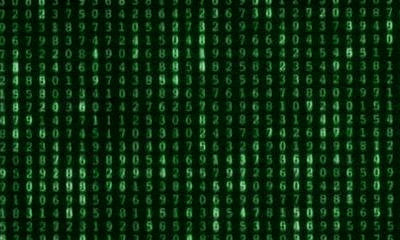Morse Code is an ancient way of communicating for miles and centuries that involves transmitting messages across miles. For almost centuries now, it was developed by Samuel Morse and Joseph Henry in the 1830s, this is the very first type of telegraph system that employed electric current flows along wires for transferring information. In 1848, Friedrich Gerke improved the code, making it simpler with special codes for German characters. As a consequence, there came an international Morse code that was adopted by most nations around the world in 1865. Long-distance telecommunication was undertaken using Morse code translators, for instance through wireless during warfare.
The development of Morse code marked a new era in communications, leading to current communication systems. This article will trace the development of Morse code and its application throughout time. The focus will be on the origin of Morse code, its growth, its application during wars, and its usage in radio communication.
We shall also look at how Morse code is used presently in radiocommunication among amateurs as well as in astrophysics.
After going through this piece of writing, there will be some clarity on Morse code’s history and current status.
The Invention and Development of Morse Code
Morse code is a type of coding in which short and long pulses are used to display letters, numbers, and various signs. Samuel Finley Breese Morse (April 27, 1791 – April 2, 1872) together with his assistant, Alfred Lewis Vail (September 25, 1807 – January 18, 1859) invented it in 1838. At first, the code appeared in the form of hand-written marks on a piece of paper whereas operators understood and heard it only by listening to tapping sounds produced by an earpiece set. The advances led to the development of the telegraph system that covered America and most parts of the world. To accommodate letters with diacritic marks. Later on, in 1851, a conference of European nations developed a variant named the International Morse Code translator.
They used Morse code that translated the letters, words, and numbers into dots and dashes based on the most frequent use. The dots and dashes were used to represent a few letters for the original Morse Code translator while the dots and dashes were adopted to represent every letter for the International Morse. Besides that, the International Morse code involves constant length dashes instead of the varying dashes of the original Morse code.
It brought about a new approach in communication which resulted in the development of a functional telegraph system. However, Morse's mansion is preserved as a museum in Poughkeepsie, New York. However, today, Morse code is used for some purposes, like air traffic and amateur radio.
Morse Code in Wartime
Wartime communication mainly used the Morse code DityEngine Input. The quality of the environment has declined as a result of environmental issues. During WWII, Britain’s armed forces heavily relied on Morse code translators for the communication of vital information. It enabled communications between battleships and warplanes over long distances and transmitted data to mainland Britain. Morse code was also used by soldiers in communicating crucial tactical information to their bases. Both the Korean War and the Vietnam War were also conducted using Morse code. They had a hidden message for the German Nazis that it could transmit among warships that sailed on the sea.
The Morse code translator was employed in World War II to transmit significant communications between battleships and airplanes so that they could pass instructions back to Great Britain. It is possible to say that the British Army would use Morse code in order to transmit vital information. The naval warships communicated back to the base in order to keep the command centers informed of the situation and updated on the status of their fellowships.
Spies in wartime transmitted messages using Morse code. Heads of this group used Morse code translators to send encrypted signals that could be passed off as harmless knitwear.
Morse Code in Radio Communication
Some examples of its use include aviation and amateur radio. It is a series of short and long pulses that stand for every alphabetic letter or digit in a message. It commonly conveys using an intermediate like a modulated electric current, radio waves, visible light, or audible sounds. Short sounds are represented by dots and long sounds are represented by dashes. Unlike voice-over long-distance, a Morse code translator is more intelligible as the receiver only distinguishes between short and long dit or dah sounds.
In amateur radio, Morse code is permitted on all amateur bands: LF, MF low, MF high, HF, VHF, and UHF. Some countries reserve some parts of amateur radio frequencies for the transmittal of coded messages using the Morse code mode. Morse code translator finds its application in various emergencies when the communication message is transmitted through improvised radio stations which are very easy to switch to on and off.
Morse Code Today
In fact, though the Morse Decoder is not common in mainstream communication anymore, it remains a relevant tool of communication within specialized fields. Even today, amateur radio operators, maritime navigators, and soldiers use this method for different aims.
Amateur Radio
Today, the most actively-using Morse code users are still amateur radio enthusiasts, otherwise called “ham operatorsâ€. They employ Morse code for various activities, including:
- Emergency Communication: One of the most reliable modes of communication during natural calamities or other emergency situations where voice communication fails. Ham operators are able to send important messages in the Morse code and ensure that important info is delivered to the right people.
- International Contact: Ham operators are able to communicate through Morse code and connect with other enthusiasts across the globe. It promotes unity among them while encouraging their cross-cultural interaction.
- Skill Development and Training: Ham operators should learn Morse code as it helps them understand radio signals and the underlying theory of electronic communications. Additionally, it proves demanding mentally and rewards one with an exhilaration of satisfaction.
Maritime Navigation
It is important to note that maritime navigation still uses Morse code to identify ships and stations. An air traffic control system known as ATIS uses Morse code to transmit an airport’s call sign, which helps a pilot find the right tower to get approach instructions. Moreover, Morse code is also employed to mark maritime beacons or signal stations.
Military Applications
However while voice communication remains mainstream military communication, Morse code still has its place in some very particular cases. Emergency signaling, field communication in rugged areas, and training may be used by military personnel using Morse code. The basic nature of Morse code makes it an efficient alternative communication technique during technology breakdowns.
Cultural Significance
Morse code is culturally significant as it represents creativity, communication, and persistence. Many literary works, films, and songs about it have been produced drawing the attention of readers worldwide. In addition to being used practically, morse code has inspired artists and storytellers who make it live on even today.
Conclusion
The history of Morse coding is linked with that of communication development. This goes further than mere practical applications; it also shapes the culture, while giving birth to multiple generations of inventors as well as communicators. As we navigate the ever-evolving world of technology, Morse code stands as a testament to human ingenuity and the enduring power of communication. Its simple yet effective language remains a reminder of the transformative power of connecting ideas and bridging distances.










